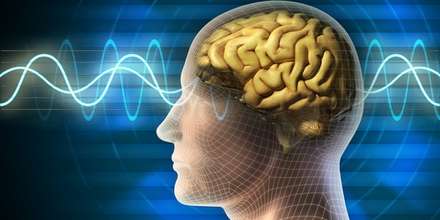Whether it is the painful looking pretzel-like postures one is supposed to take or the mental grit needed to chase away intruding thoughts, the popular generic image of meditation depicts the practice as “no pain, no gain” type of undertaking.
In the case of the Transcendental Meditation (TM) practice excruciating effort is in no way part of the process, yet TM still often gets lumped into the same category with other meditation types for which it is central.

Yet a brand new study published in the journal Brain and Cognition provides clear proof that Transcendental Meditation’s claim of effortlessness has solid scientific basis.
Clearing up the confusion
The root cause of the misunderstanding that Transcendental Meditation requires effort is clear enough.
“Transcendental Meditation uses a mantra, and for this reason some researchers maintain that it involves focused attention and controlling the mind,” said Fred Travis, the lead author of the study in a public release by Maharishi University of Management.
“Those who practice TM know this is not the case. This study supports their experience that Transcendental Meditation is easy to learn and effortless to practice.”
The study to set the record right on Transcendental Meditation involved 87 students of Maharishi University of Management. The participants had practiced Transcendental Meditation for different amounts of time, ranging from one month to five years.
Such a selection of participants helped to examine whether there were any significant differences between novice and experienced practitioners of the Transcendental Meditation technique.
The students were asked about their experiences during meditation and their brain patterns were measured in three different situations: while they rested with eyes closed, while they practiced Transcendental Meditation and while they worked on a challenging computer task.
Even short term practice makes perfect
One of the encouraging findings of this study was the lack of correlation between how often a student had transcendental experiences (lack of time, space and body senses) and how long they had practiced TM.
“This supports the understanding that Transcendental Meditation uses the natural tendency of the mind to transcend–to move from active thinking to deep, inner silence. Extensive practice doesn’t make a natural process go any better,” Travis explained.
TM versus just resting
The analysis of the participants’ brain patterns established another crucial point. This finding centered on the activity levels of the default mode network – part of the brain active when a person is engaged in internal thinking.
Level of activity in the default mode network is high when a person just sits eyes closed and low when a person is engaged with a specific task. We can all observe this ourselves, noting that while we are fully engaged in a task, we barely have thoughts about other things and the moment we lay down in bed and close our eyes, images and ideas pop up in our heads.
In this study researchers found that during Transcendental Meditation practice, the default mode network of the participants did not become inactive – as would be the case if a person was focusing on a specific task. This indicates that TM does not involve effort.
Interestingly, all other types of meditation are reportedly characterized by deactivation of the default mode network because control of the mind and focus are involved.
“While people may not have had the experience of effortless transcending and so do not know what it feels like to transcend, they can now see the objective high activation in the default mode network–and see that something different is happening during Transcendental Meditation practice.”
But inevitably, this raises the question: if the same patterns of low default mode network activation are shared by Transcendental Meditation and resting with one’s eyes closed, what’s the unique value of the former?
Digging deeper into the data, Dr. Travis found two important differences between brain states that arise during Transcendental Meditation and those that characterize simple eyes-closed rest.
During eyes-closed rest, more beta brain waves were detected in parts of the brain of the participants associated with memory and motor aspects of speech production, indicating possibly the mental chatter which goes on in that state.
During Transcendental Meditation practice, the participants had more theta brain waves in orbito-frontal areas associated with reward anticipation.
These findings point to a difference between the two states and indicate that during transcending the mind is moving to more charming levels of mental functioning.
WATCH VIDEO: What is the Default Mode Network? (Video by the Society for Neuroscience)
Understanding the nature of Transcendental Meditation
The study’s results therefore help to clarify two of the most common misconceptions regarding Transcendental Meditation.
Firstly, the current research demonstrates that unlike many other forms of meditation, practicing TM does not require effort.
Secondly, it is not equal to just sitting with closed eyes.
What’s more, it also re-affirms that novice Transcendental Meditation meditators reap just as many benefits as the more experienced ones.
“It’s a critical point,” Dr. Travis said. “Researchers, commentators, and popular media often lump meditation practices together. This distorts understanding the benefits of different meditations and confounds applying these approaches to different subject populations.”
ACADEMIC REFERENCE
F, Parim N. (2017). “Default mode network activation and Transcendental Meditation practice: Focused attention or automatic self-transcending?” Brain and Cognition, 111: 86-94. DOI:10.1016/j.bandc.2016.08.009.


















